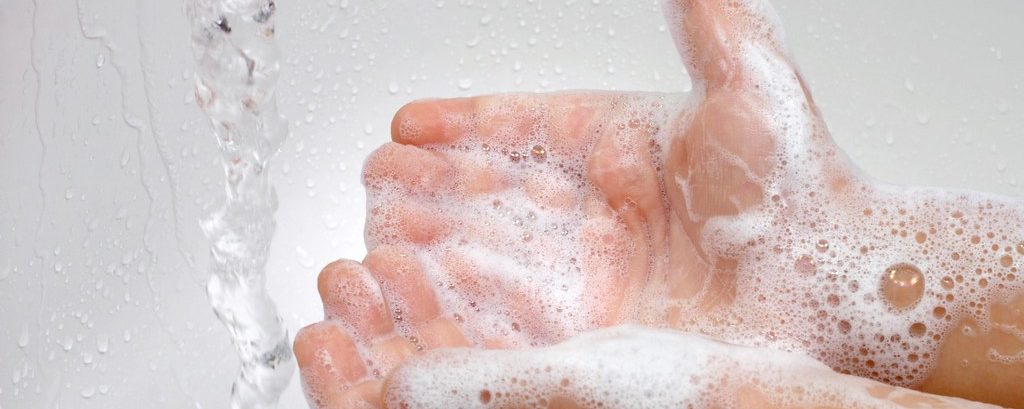By Nicole Xu
In light of the recent COVID-19 pandemic, one of the most commonly proposed safety precautions is to wash your hands thoroughly. This is true for many other diseases as well. The CDC states that proper hand hygiene can prevent 1 out of 3 children who get diarrheal diseases and 1 out of 5 children with respiratory illnesses. Usually, people use soap or alcohol-based hand sanitizer for handwashing, but the effectiveness and practicality of these methods are limited. Soap-based cleaning requires an abundance of handwashing facilities and water. Alcohol-based hand sanitizers are not as effective when hands are visibly dirty or greasy, and can also lead to antimicrobial resistance over time. To help mitigate these issues, Runze Huang from the Demokritou Lab at the Harvard School of Public Health developed a novel nanoscale antimicrobial agent.
This “nanosanitizer” is composed of both antimicrobial agents and chemically reactive oxygen radicals known as reactive oxygen species. Some of the active agents include hydrogen peroxide, citric acid, and isopropanol. These agents are suspended in a solution that is pushed through a needle by compressed air powered by a high voltage supply. That apparatus is then placed over a conductor that helps create an electric field between the needle that facilitates the formation of a curvature in the water droplet called the Taylor cone. Nanosized charged droplets organized in what is known as an engineered water nanostructure will then break apart from the Taylor cone as the final delivery mechanism.
After synthesizing these droplets, it was necessary to test the efficacy of different antibacterial cocktails against E.coli, S. aureus, and bacteriophage MS2 on stainless steel test surfaces. The different bacteria were grown and then exposed to the different nanosanitizer droplets. Bacteria inactivation by the different cocktails was measured after 30 seconds of exposure. The most effective cocktail for E.coli consisted of 10% hydrogen peroxide and 1% citric acid and resulted in a 3.5 log reduction of bacteria on the coupon. For S. aureus and bacteriophage MS2, the highest reduction was a 1 log decrease of bacteria caused by 10% hydrogen peroxide, 1% citric acid, 0.1% lysozyme, and 0.5% benzalkonium chloride. As expected, a greater time of exposure was found to increase inactivation of bacteria.
These results are very promising for moving forward with efforts of large scale production of nanosanitizers. Compared to traditional wet sanitizing methods, nanosanitizer droplets require no additional use of water and a very small amount has high antibacterial efficacy. Additionally, due to the nanoscale of these droplets, nanosanitizer can be used in a very targeted manner and limits risks of antibacterial resistance. Lastly, the manufacturing and usage costs are relatively low, and engineered water nanostructures have proven successful at combating foodborne pathogens. Hopefully more testing in physiologically systems can be conducted so that nanosanitizer droplets can become widespread on the market as a novel sanitation technique.
Work Cited:
Huang, R., Vaze, N., Soorneedi, A., Moore, M. D., Xue, Y., Bello, D., & Demokritou, P. (2019). Inactivation of Hand Hygiene-Related Pathogens Using Engineered Water Nanostructures. ACS Sustainable Chemistry & Engineering, 7(24), 19761–19769. doi: 10.1021/acssuschemeng.9b05057
Show Me the Science – Why Wash Your Hands? (2018, September 17). Retrieved from https://www.cdc.gov/handwashing/why-handwashing.html
